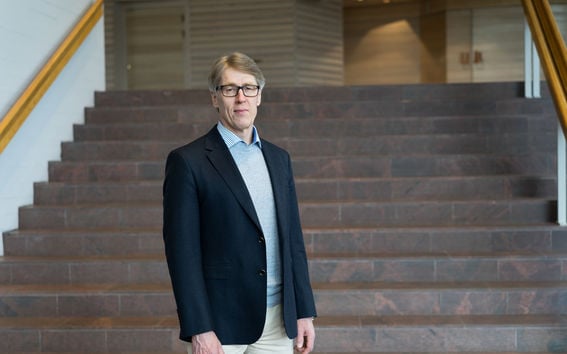Metals needed for climate solutions – will what we have be enough?

In October 2018, the UN Intergovernmental Panel on Climate Change (IPCC) published a report, which stated that all countries would be required to take swift climate change measures if global warming is to be held in check. This will require a wide range of measures, one of which is the electrification of transportation. Another method for mitigating climate change is to increase the use of renewable energy.
People own large amounts of mobile electronics, including mobile phones, tablets and laptop computers. The growing number of electronic devices combined with increasing electric transportation and renewable energy storage means greater demand for lithium-ion batteries and, in turn, a greater need for battery metals: cobalt, lithium, nickel and copper.
Are there enough mines?
The demand for electric cars is affected not only by environmental and climate factors, but also technological and political developments, which is why accurately forecasting their numbers is difficult. However, the number of electric cars has seen significant growth in the 2010s, with no sign of slowing down. In order for us to be able to meet this growing demand, the production of all battery metals must be increased considerably. Even though known mineral resources will remain sufficient for decades or even centuries, the number of existing mines is inadequate to handle the anticipated demand.
“New mines are rarely opened. It is an extremely expensive investment, which usually takes 10 years, and it might be decades before a mine sees any returns. This is not particularly attractive to investors, especially considering that numerous mining projects have failed so badly, with budget overshoots, over the past couple decades”, explains Ari Jokilaakso, Professor of Metallurgy at Aalto University.
Can electronic scrap and battery recycling solve the problem?
Although iron (steel), aluminium and copper are recycled fairly well, other metals are not recycled as much. For example, lithium is not recycled at all.
“Money talks. If recycling can't generate any revenues to cover costs, much less generate a profit, no one will do it unless they're forced to”, says Jokilaakso.
One of the bottlenecks in recycling is many countries' lack of infrastructure for collection, sorting and recycling. The other is people's understanding of how important recycling is. Approximately one out of every three people in the world keep their old mobile phones at home in their desk drawers.

Jokilaakso poses a math problem:
“How much, for example, gold is left unrecycled – and has to be excavated from the earth – if a single phone contains some 25 mg of gold and 1.5-2 billion phones are manufactured each year, with 30% of these stuck in some sock drawer for a rainy day?”
Some of the metals contained in the batteries are classified in the EU as critical raw materials, which means that they are important for the EU's economy, but difficult to obtain and nearly impossible to replace. In most cases, the production of these raw materials is concentrated in just a few countries. In some of these countries, metals are mined in dangerous conditions, using child labour.
Europe's own production cannot be increased because its deposits have already been used up. Finland is almost the only country to find new, profitable ore deposits in recent years. In order for the production of metal raw materials to be environmentally and socially sustainable and responsible, metal refining companies must ensure responsible concentrate production, while authorities and consumers must demand certificates of responsibility for the raw materials used in metal products.
Clean energy and electric devices are only possible if both the variety and volume of metals increase. This will not be possible without new mines or effective recycling - both of these are needed.
“Existing base metal production processes should be developed so that recycled devices containing metals can be used as a raw material. Entirely new processes or combinations of various individual processes must also be developed”, concludes Jokilaakso.
However, the numerous elements contained in recycled scrap that are not found in metal minerals do present a challenge. Their impact on processes and how they behave in them must be researched. Indeed, this is being done at Aalto University in several projects and doctoral theses together with industrial companies.
More information:
Ari Jokilaakso, Professor
Aalto University
[email protected]
Read also: New method enables the recovery of trace platinum concentrations
Photos by Adolfo Vera and Anni Hanén
- Published:
- Updated:
Read more news

Unite!’s Open Science and Innovation Management Handbook now available online and in print
The handbook is a practical guide for university researchers, R&I support services, and university managers.New covers, writing templates and ordering system for doctoral theses
The current doctoral thesis ordering system will be replaced after 30 Nov 2024. New covers and writing templates have been designed for doctoral theses.
New technology brings immersive audio to everyone’s pockets
A new type of sound recording technology allows recording of immersive soundscapes with ordinary microphones and an inexpensive accessory